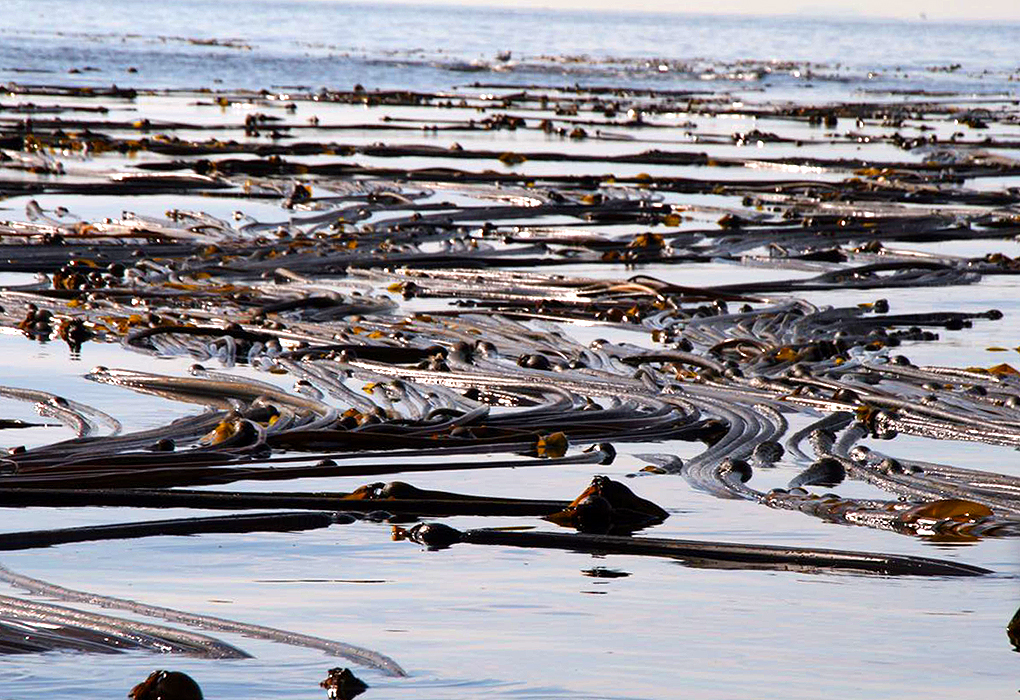Bull Kelp
Scientific name: Nereocystis leutkeana (Nereocystis is Greek for ‘mermaid’s bladder’)
Author: Antonia Kropp
Life History/ Interesting Facts: Bull Kelp is a major species of kelp and and one of the largest brown algae. It is a fast growing seaweed that can grow up to 2ft in one day and reaches a total size up to 36m (118ft). Bull Kelp is a vital component of the coastal ecosystem and comparable to a forest on land. It is food and habit for many animals and other seaweeds. It has a large bulb filled with carbon monoxide gas at the end of a long, robust and flexible tail (called a stipe), that keeps the kelp floating on the surface to get the sunlight it needs for photosynthesis. It is held to the floor of the ocean by a holdfast made up of many root-like structures. Most of the kelp dies in winter because of the stormy and rough weather and washes up on beaches where it serves as food and shelter for the animals on sandy shorelines.


Habitat: Bull Kelp grows in kelp forests along the rocky coastline and in intertidal zone but not far off the coast it may be found in waters up to 20m (65ft) deep. It is common from northern Alaska to southern California (in colder water). As a result of its location near the coastline it can warn boaters of shallow reefs or the coast.



